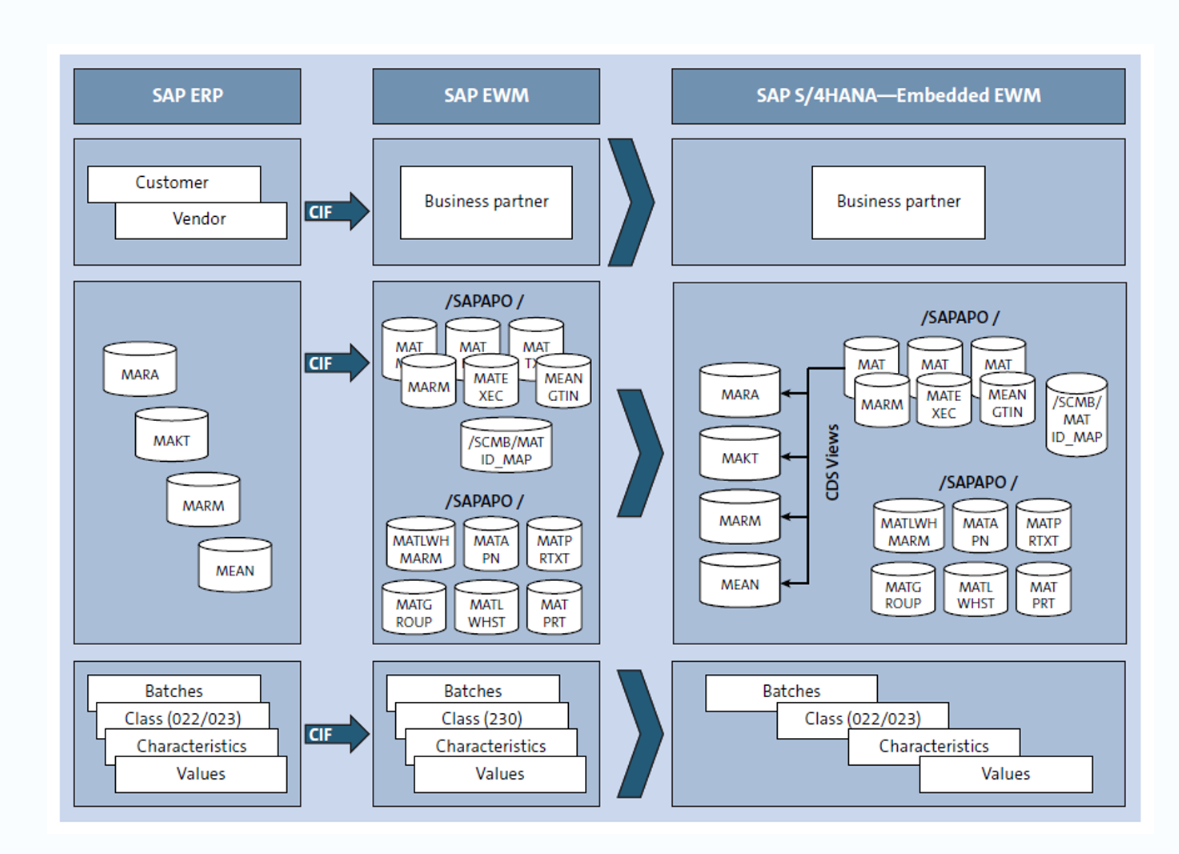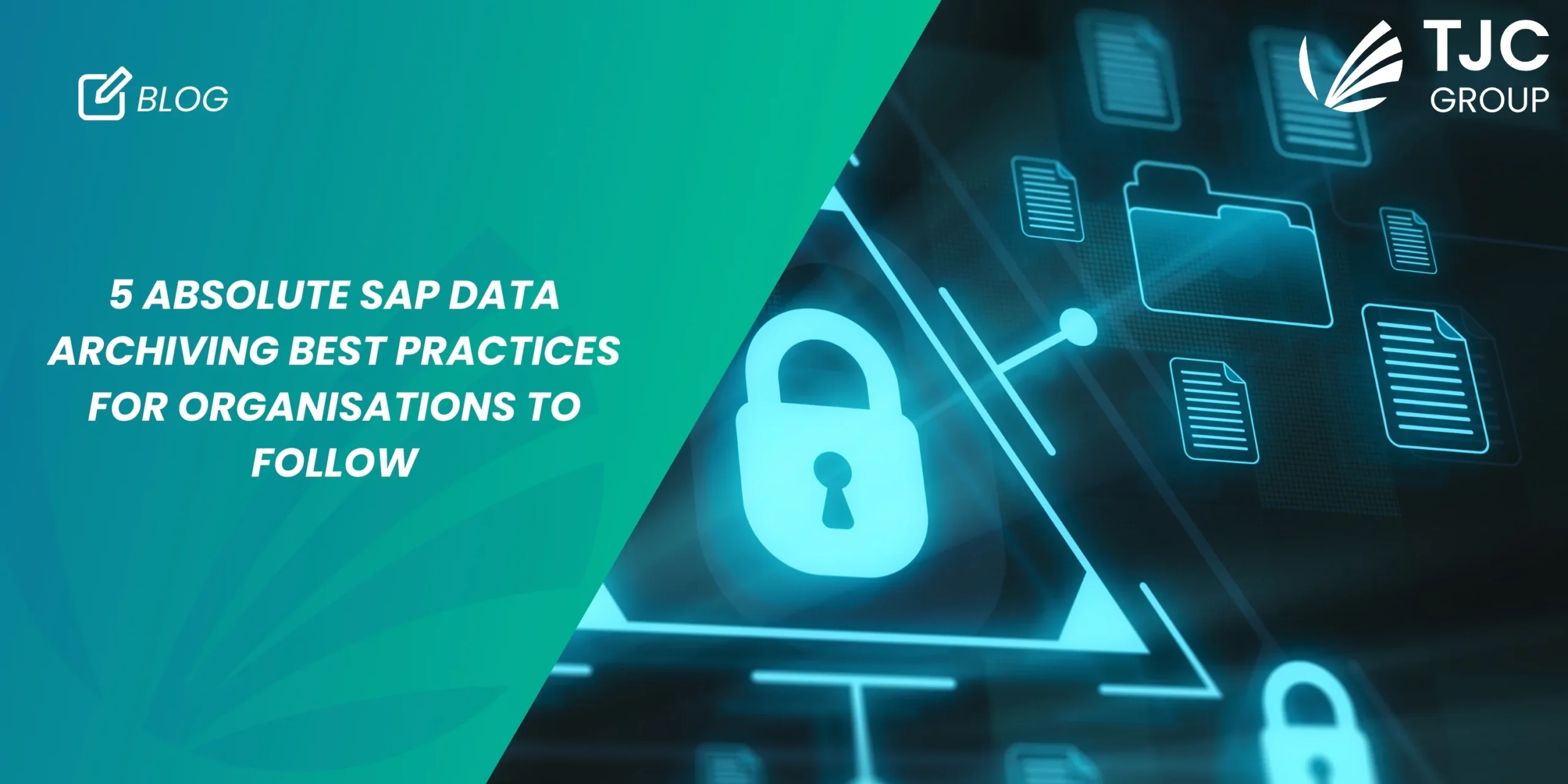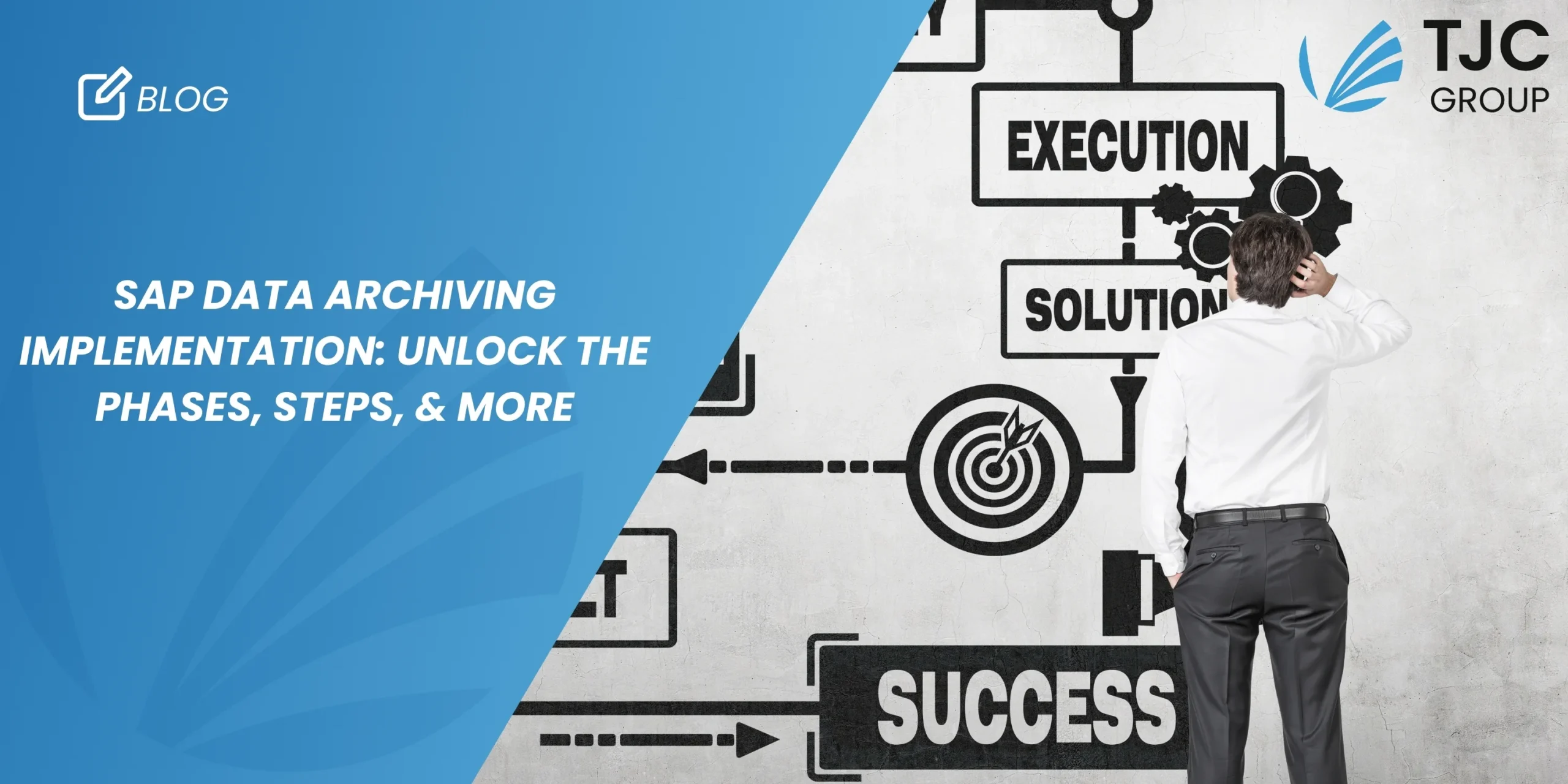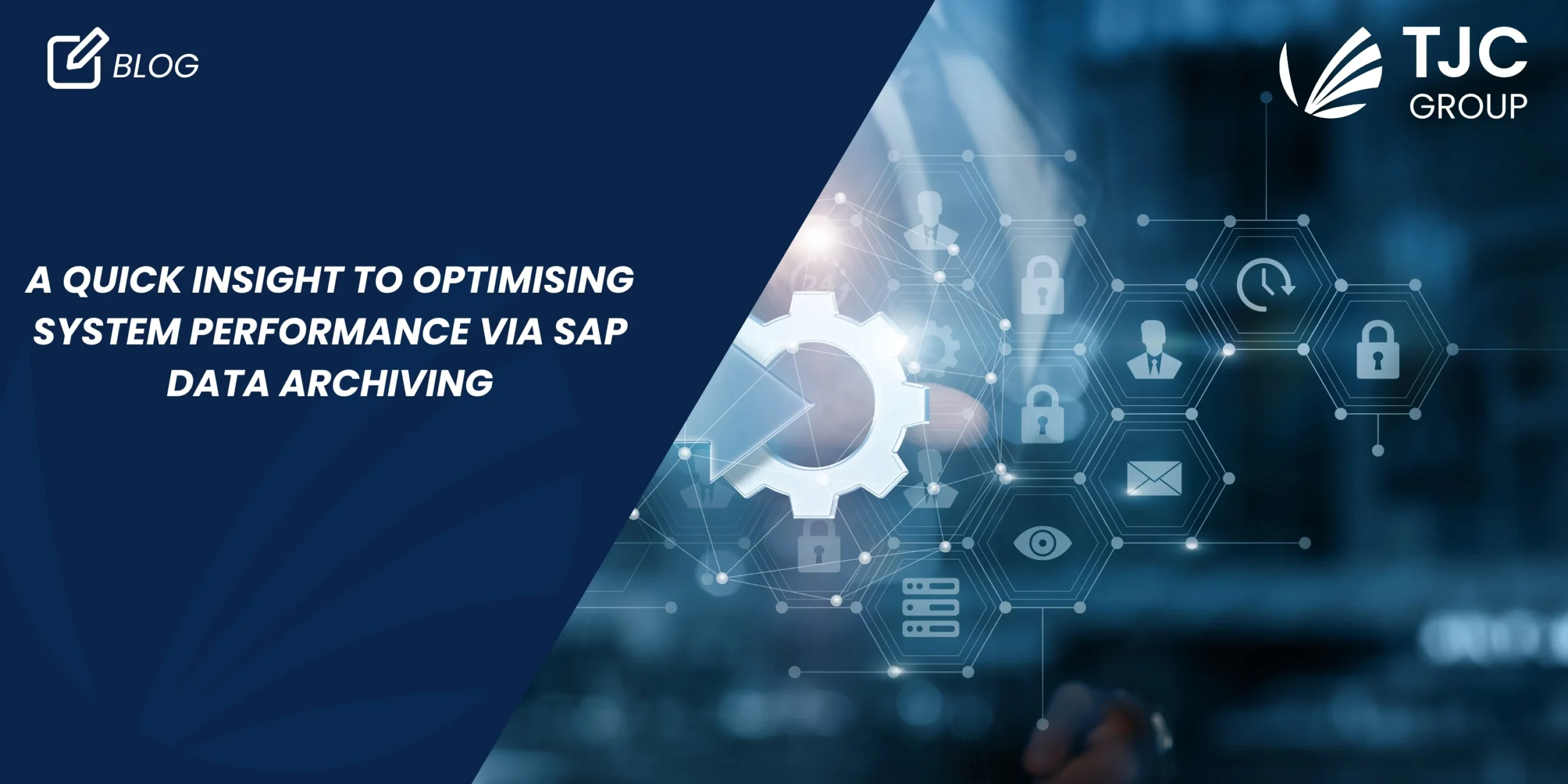
According to Statista, the number of users for SAP S/4HANA has significantly increased, from just 370 users in 2015 to 20,000+ by the second quarter of 2022. With S/4HANA, SAP has introduced the world to an upgraded ERP system capable of multiple deployments and more. Here is a blog on the top 5 benefits of SAP S/4HANA that you can leverage for your businesses. Read on!
Table of contents
Introduction
Enterprise Resource Planning, or ERP, is a software system that helps businesses run their entire operation – from supporting automation and processes in finance and human resources to manufacturing, supply chain services, procurement, and more. This resource planning software has evolved over the years; with modernisation and advancements in the world, ERP systems have upgraded too, whether it is their features or deployment.
For example, modern ERPs have three different ways of deployment – in a public or private cloud, on-premises, or hybrid scenario in a combined environment. One of the most popular ERP systems in the industry today is SAP S/4HANA, which offers all the deployment options. This new ERP from SAP comes with a plethora of benefits and upgraded features that benefit businesses beyond excellence.
SAP S/4HANA: Your go-to ERP system
First released in 2015 the SAP S/4HANA system is the most recent version of SAP’s enterprise resource planning suite. It is considered one of the most significant changes to the core offerings by SAP ever since the inception of the R/3 system in 1992. An interesting fact – S/4HANA was originally released as a next-generation financial solution in 2014 under the name SAP Simple Finance. However, nine months later, SAP announced the expansion of its core to become a full-scale ERP system.
In 2016, SAP introduced the logistics functionality to S/4HANA in four key areas –
- Sourcing and procurement
- Manufacturing
- Supply chain
- Asset management
Apart from this, SAP ERP enhancements, such as extended warehouse management (EWM) and production planning/detailed scheduling (PP-DS) functionalities, were embedded directly into the SAP S/4HANA system. The figure below gives a pictorial description of the same –

Additionally, in 2017, SAP added machine learning capabilities to the S/4HANA suite to help businesses perform easier goods and invoice receipt reconciliation while automating invoice assignments. In September 2017, transportation management functionality was also embedded into this ERP system.
SAP S/4HANA has seen the most upgrades in 2018 – SAP added predictive accounting functionality to it, and the subsequent releases saw the implantation of additional intelligent technology upgrades in the areas across artificial intelligence, blockchain, and the Internet of Things. Cut to 2021, SAP released multiple industry-specific offerings of S/4HANA across the energy and natural resources, financial services, service and consumer industries, discrete industries, and public services.
ERPs are called the central nervous system of a company’s operation – they help streamline complex processes, ensure data is accurate and accessible, and much more. The SAP S/4HANA comes with features that enable organisations to manage their operations efficiently. Its integration in different areas, such as human resources, finances, supply chain, etc., allows companies to experience a unified 360-degree view of their operations.
Leveraging the benefits of SAP S/4HANA
While the SAP S/4HANA system offers a myriad of benefits to the users, here are a few key benefits that organisations can leverage for themselves –
- Improved efficiency of the organisation
S/4HANA by SAP can automate tasks, such as data entry, invoicing using the SAP Fiori apps, etc., thereby eliminating manual efforts. It enables users to build and customise apps per the organisation’s requirements while using peripheral technologies like the SAP Intelligent RPA for further automation processes. Overall, the S/4HANA ERP system helps improve efficiency, freeing the workforce to focus on more important tasks.
- Simplified ERP system
A key feature of this newer ERP system is that the management and administration of the IT landscape can experience a significantly simplified approach. As a matter of fact, SAP has added simplicity as one of the primary benefits of S/4HANA. SAP S/4HANA centralises the hardware and network resources while serving as the digital core for the simplification of several business processes by utilising the power of the HANA in-memory database.
- A cost-effective system
SAP S/4HANA deployment can significantly reduce the total ownership cost over the long term. Adopting this system is a smart move as it brings together all the analytical and transactional capabilities of several systems at one location. By deploying S/4HANA, organisations can lower integration costs as all the data is stored in one database, reducing the complexity of updating and integrating multiple systems. Furthermore, with decreased hardware requirements, organisations can also save on hardware and maintenance costs. Lastly, this new ERP has a simplified user interface, reducing training time and overall support costs.
- Ability to resort to standard while providing control
SAP S/4HANA enables organisations to revert to standard settings and regain control of their systems. Central to this process is the in-memory, column-based architecture of S/4HANA, which allows an efficient and agile way to adjust, revise, and reset system settings. Additionally, the new ERP boasts numerous powerful auditing, monitoring, and compliance features, further controlling the system. From powerful command-line interface and scripting capabilities to comprehensive authorisation and access control, S/4HANA helps organisations regain control of their systems effectively.
New features of SAP S/4HANA
- A new concept: Business Partner Approach
The distinction between Customers and Vendors is a relic of the past. In S4HANA, a “Business Partner” is the leading object and single point of entry to maintain the Partner, Customer, and Supplier (previously known as Vendor in older SAP versions) master data. Business Partner is now capable of centrally managing master data for business partners, customers, and suppliers and brings several advantages:
-It allows the maintenance of multiple addresses along with the usage of corresponding addresses.
-Only one Business Partner can represent a legal entity.
-Multiple roles can be assigned/associated with a Business Partner (while in classical transactions, one account group is assigned to only one customer).
-General data is available for different Business Partner roles along with storage of specific data for each role.
-It also allows maximal data sharing and reuse of data, leading to easier and more efficient data consolidation.
Customer Supplier Integration (CVI) in Business Partner Approach
In a traditional ERP system, you will often come across redundant object models. However, in this process, the supplier master and customer master are used; the mandatory target approach in SAP S/4HANA is the Business Partner Approach. Therefore, Customer customer-supplier integration is an advantage when moving to S/4HANA.
Business Partner Approach, as a whole, is capable of managing master data for customers, partners, and suppliers – making it a single point of entry for creating, editing, and displaying master data.
- Embedded with SAP Fiori 3.0
By default, the SAP S/4HANA ERP system comes with the SAP Fiori 2.0 feature, providing a modern design and an innovative and impeccable user experience. SAP Fiori enables users to easily access work lists, overview pages, reports, etc. With SAP Fiori 2.0 it is possible to have a tile dedicated to a task and a specific user. However, with the SAP S/4HANA 2021 (on-premises) release, an enhanced SAP Fiori launchpad experience for the web was introduced – which is known as the SAP Fiori 3.0. SAP Fiori 3.0 is the new target design system by SAP across all its products to support holistically the Intelligent Suite, running on any device. For the upgrade, Fiori 2.0 was taken as a starting point while establishing aspects that would be added to support the enhancements.
The UI design of the SAP Fiori apps is highly intuitive, responsive, and simple, enabling users to access necessary details easily, regardless of the device or deployment. Hence, the overall user experience of the S/4HANA ERP system also becomes seamless. Additionally, in the future, natural language interaction and machine intelligence will become a key part of the Fiori experience.
Design and technology: UI5 as an enabler for SAP Fiori 3
The UI5 is the choice of technology for enterprise-ready SAP Fiori apps, the upgrade has been embedded with out-of-the-box technical assets, empowering customers and partners to enable the Fiori 3 design system. Today, UI5 delivers the SAP Fiori 3 design through assets available as of UI5 1.65: Theming, Cards & Layouts, and Shell Bar.
- Flexible workflows
A new concept introduced in the SAP S/4HANA landscape, flexible workflow intends to simplify workflow configuration. This is particularly relevant for Procurement and Purchasing workflows. The Documents in Sourcing and Procurement, such as purchase requisition, purchase order, request for quotation, etc., usually have to go through a lengthy approval process. However, with Flexible workflows, the process becomes much simpler and efficient.
The flexible workflow is based on a set of predefined workflow scenarios and tasks, providing users with the functionality to define a condition-based workflow for different processes, particularly in sourcing and procurement. In this, users can define a single or a multi-step approval process – the relevant works are available in the My Inbox Fiori App for the approvers. That said, Manage Workflows Fiori Apps are also available for purchasing documents; the apps allow business process specialists to set up workflows based on business requirements.
Below are the seven main steps to be followed while configuring flexible workflows –
– Automatic workflow customising
– Activate flexible workflow scenarios
-Define step names and decision options to be used in the Fiori app’s ‘My -Inbox’ section
-Define visualisation metadata for My Inbox
-Deactivate event-type linkages for SAP Business Workflow
-Generalise tasks and activate event-type linkages for Flexible Workflows
-Register gateway services for value helps
Even though both Release Procedure and SAP Business Workflow are still available in S/4HANA, it is recommended to use the new Flexible Workflow functionality in S/4HANA.
- Responsive multi-device adaptation
As the upgrades of S/4HANA are embedded with SAP Fiori 3, users can leverage a plethora of benefits – one of which is the responsive design. One of the most compelling factors of Fiori is that the applications are developed, configured, and maintained only once for the changes to be active across all devices. Thereby, users get a consistent experience, irrespective of the device used. With the help of SAP UI5, responsive design for the S/4HANA system becomes easier as it offers an array of UI5 controls for adjusting to different form factors, interaction styles, etc., automatically.
Apart from this, SAP UI5 enables size adjustment of the controls for matching the type of interactions. A big advantage of responsive design is that the apps can adjust to screen sizes without any additional coding and maintenance efforts.
Responsive grid
The responsive design, as a matter of fact, is supported by a responsive grid, which helps position UI elements in a 12-column flow layout. Users can configure the grid to display a variable number of columns as per the available size of the screen. This makes it possible to achieve flexible layouts and line breaks for large, medium, and small-sized screens like tablets, mobiles, and desktops.
Adaptive design
In some cases, a responsive design approach may not be productive or applicable. For example, users would prefer entering large amounts of data on their desktops; simultaneously, they may only want to view or enter a small subset of data on their mobile devices or tablets. In these cases, design for different devices with the capability of adapting the complexity of the use cases to the specific devices. This is known as adaptive design – an approach where app developers need to manually define specific designs from the different form factors. Although it is a little bit more effort, adaptive design allows for more targeted support of device-specific use cases.
How does S/4HANA differ from SAP ECC?
The database: S/4HANA only runs on HANA memory, whilst SAP ECC can run on many databases, including DB2, Oracle, SQL Server and SAP MaxDB.
Deployment options: There are several deployment options for S/4HANA: on-premises, on a public cloud, on a public cloud, on a hosted cloud and in a hybrid environment combining both on-premises and cloud.
Advanced features embracing new technologies: S/4HANA is designed to take advantage of advanced technologies, such as machine learning, embedded analytics, robotic process automation, Artificial Intelligence and the SAP CoPilot digital assistant.
User experience: SAP S/4HANA uses SAP Fiori as a default, whilst SAP ECC is based on SAP GUI, though it does have a limited number of Fiori apps. SAP Fiori is a design system that makes it possible to create business apps with a consumer-grade user experience. Overall, SAP Fiori offers a much better user interface, more flexibility, and faster development.
Prep your data for S/4HANA migration
A survey conducted by the UK and Ireland SAP User Group (UKISUG) in 2022 showed that 61% of the organizations surveyed were experiencing or anticipated data management challenges that would hinder the automation of their business processes during the transition from SAP ECC to SAP S/4HANA. The primary obstacle in these migrations is the overall lack of readiness in data management.
For SAP users, the issue with data management is critical as it directly impacts the performance of SAP systems, consequently leading to an increase in the Total Cost of Ownership (TCO).
Several strategies can be put in place to tackle database growth, SAP Data Archiving being the most efficient one, recommended by SAP. SAP Data Archiving is crucial and an effective strategy in managing ongoing data growth, increasing security, improving compliance and controlling costs. When archiving data, the archived data is saved outside of sAP Database but remains available for display via the usual transactions.
Without ongoing data archiving, data volumes will typically double with several years – that will depend on the industry and type of business. This article suggests an interesting comparison between a company that does not take any action to tame their data volume vs. another one that started planning a SAP Data Archiving journey towards S4HANA from an early start: https://www.tjc-group.com/blogs/data-volume-management-what-is-the-effect-of-doing-nothing/
In short, sizing the HANA database is a critical aspect of S/4HANA implementation. Find ways to control database growth and strategies to optimize SAP landscape costs. This article delves into the particularities of HANA memory and suggests several methods to control database growth beyond data archiving: https://www.tjc-group.com/blogs/hana-database-how-to-keep-data-growth-under-control-sap-data-management/
Final thoughts: Is it a boon?
The answer to that would be an absolute Yes!
SAP S/4HANA provides flexibility and scalability for businesses of all sizes. The streamlined architecture of this ERP system enables enterprises to integrate and enhance their data across multiple platforms efficiently. That said, S/4HANA also helps businesses become more agile and responsive to changing customer needs.
Additionally, businesses can combine existing legacy systems and cloud-based software with new technologies for significant customer insights and deeper analytics, leveraging predictive technology and AI-based capabilities. S/4HANA also simplifies project and portfolio management, helping businesses to monetise their investments in real-time while delivering more value to their customers.
How can TJC Group help?
With expertise of 25+ years, we help organisations with all their data management needs. From data archiving to decommissioning, TJC Group helps organisations prepare their data for SAP S/4HANA migration in a much more cost-effective and time-efficient manner by removing obsolete data.
- Reduce the size of the SAP database to save on HANA memory costs.
- Import only relevant data by getting rid of obsolete data, such as old company codes.
- We will help you perform the Customer/Vendor Integration by archiving obsolete customers and suppliers.
- Manage personal data. Enforce compliance in line with Data Protection laws. We’ll ensure the data in SAP database is compliant with the legal requirements for data retention and data destruction.
- If you have opted for a Selective Data Transition approach, we can set up the SAP Business Transformation Centre for you.
- Once on S/4HANA, ensure your SAP legacy systems are safely decommissioned and all the information remains available for tax and audit purposes, or simply for business needs.
- After S/HANA migration, ensure ongoing archiving and data deletion is maintained with automation. Such manual tasks never stop, it’s like a hamster in a wheel. Automation with the Archiving Sessions Cockpit is a plus.
We follow a proven methodology based on SAP Activate while ensuring a 100% seamless workflow. If you are planning for the S/4HANA migration, contact us today!
Let’s get your SAP database lean, efficient, low-priced, and ready for migration onto a newer and better ERP system!
Mentions
https://www.statista.com/statistics/590976/sap-hana-s4hana-customer-numbers/#statisticContainer
https://learning.sap-press.com/sap-s4hana






